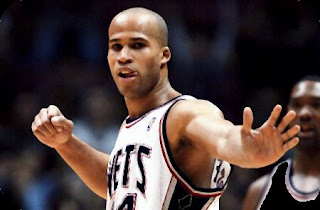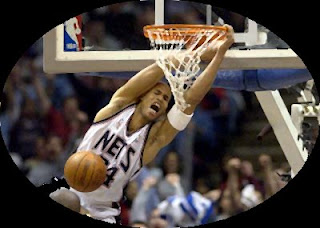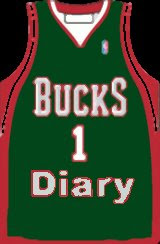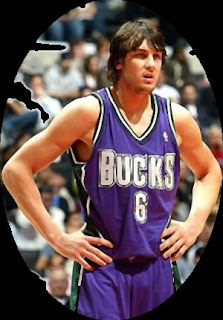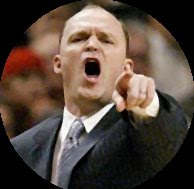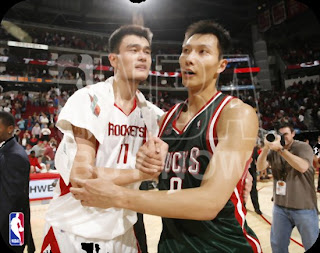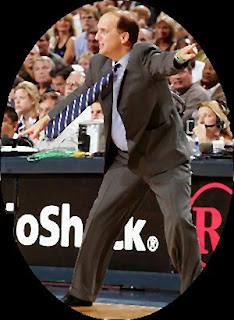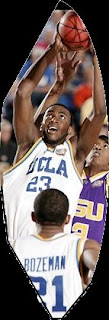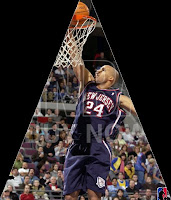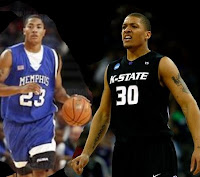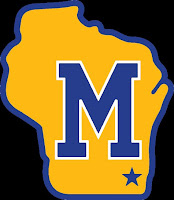
The Brewers are rocking their way back to prominence. They may not get there this year or even next year, but with the flood of prospects they have already hit on at the major league level, the next wave that's knocking the cover off the ball at the Double A level, and the tractor haul of high prospects they just got in this June's draft, they will get to the promised land sooner rather than later.
And they will do so primarily because of prudent drafting. Particularly the way they ignore consensus opinion when its their turn to choose. That's the thing the Bucks can learn from the Brewers success: DON'T DRAFT YOUR SLOT!! Once you've identified talent, go get it, no matter where that talent was "slotted" or where you happen to be picking on draft night. That's the philosophy the Brewers followed when they selected Ryan Braun, Prince Fielder, and their latest phenom, Matt LaPorta... and it looks like its working.
But what do I mean by "Don't draft your slot"? Let me use last year's Brewer draft to illustrate.
If I remember correctly, the Brewers had the 7th pick in last year's June free agent baseball draft. When their turn came up they identified a player still on the board whom they believed could help their team -- a slugger out of Florida named Matt LaPorta -- and they made him their choice at that spot.
In the minds of draft experts, LaPorta had some flaws. He was a player with a big bat but not a lot of "upside" as draftologists like to say. Instead he had that awful characteristic that all good Draft Geeks loath... a history of solid production!! Because of those two traits, the baseball Draft Geeks had LaPorta "slotted" as a second round pick. The Brewers chose him at number seven anyway.
Oh my God, the "Draft Geeks" went nuts!! LaPorta at 7!! Are they crazy!! Don't the Brewers understand the draft?!! He wasn't supposed to go that high!! The Brewers...oh, my God... "OVERDRAFTED"!!
Oh, no! The Geeks dubbed LaPorta an "overdraft"! That's bad. You see, ever since the original Draft Geek, Mel Kiper Jr., excoriated one of the Irsays for "not understanding the draft" back in the mid 1990s when he selected some linebacker higher than Kiper thought the linebacker should have gone, all good Draft Geeks have considered "overdrafting" the most mortal of all sins... something like not going to church every Sunday if you are a Catholic.
But what the Brewers realized -- to their credit -- is that Draft Geeks who believe in that kind of stuff are living in little fantasy worlds where trading partners are readily available, and where everyone agrees absolutely upon the value of every draft pick and is therefore willing to trade slots with you in accordance with your common understanding. But that is not an accurate reflection of the real-life situations general managers are faced with on draft night.
In real life, sports drafts are, as John Hammond famously said, time-compressed "crapshoots". In the actual moment, general managers are asked to make snap judgments based upon the limited options in front of them.
Therefore, the goal of a general manager going into a draft cannot be to "maximize the efficiency" of his pick. That's a fantasy. His goal should be to identify talented players, rank them, and corrall the highest one left on the board when he picks... regardless of where he picks and regardless of where everyone else thinks the particular player should be drafted.
Now, if a general manager sees a player he thinks will be productive, and if that GM believes he can draft the player lower than his particular spot, and if he can simultaneously find a team who agrees with him at that very moment and is also willing to facilitate him in a "trade down"... then by all means he should do it. But that's a lot of "ifs".
More likely, the GM will not find any snap offers to move down to a spot that is still high enough to insure the GM's coveted player will still be on the board. In that case, the GM should not forego picking the player just because the GM's draft spot is well above where the "Consensus Mock Drafts" say the player should be selected. That is stupid. After all, there are only a handful of players in every draft who will pan out and become contributing pros. If a GM is confident he has identified one of them, he has to pick him... regardless where the player is "supposed" to be picked.
That's how the Brewers draft. If they see value, they snatch it and let the Geeks carp all they want about where the player "should have gone". After all, in the long term no one remembers where the player "should have gone" anyway. They just know whether he sucks or not. And Matt LaPorta happens to not suck.
That's why a year after the draft, I'm driving around listening to the same sports radio fans who aped the Draft Geeks the day after the draft ("LaPorta was a second rounder!! What the hell is Melvin doing picking him at 7?!!") insist that the Brewers "have to hold onto LaPorta" at the trade deadline (that's actual fan dialogue I heard this morning!!).
You see how sports fans can change their minds? They are wonderful that way. Time and success tends to heal all their wounds, trust me. You just have to have the guts at the moment your pick comes up to take productive talent over the consensus "slot pick".



